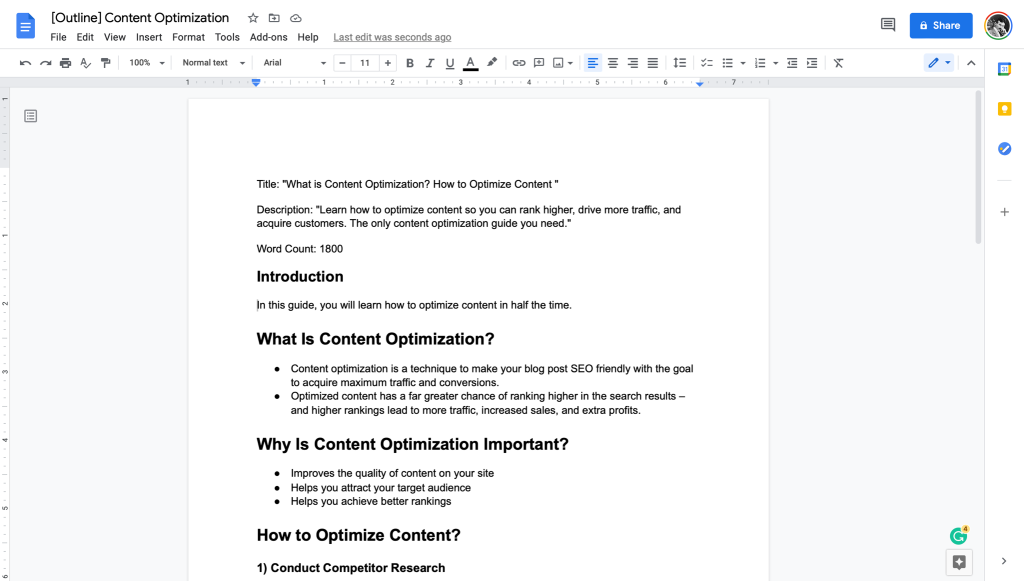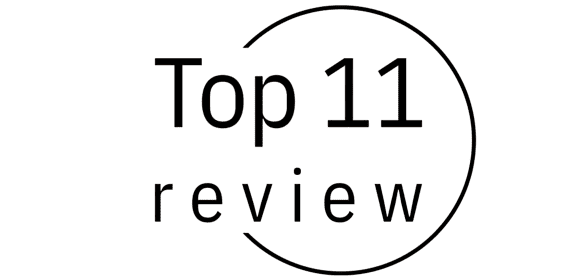An effective content outline ensures focus and quality in your website, blog, or other online content. Serving as a roadmap, it not only keeps you on track with the topic but also provides clear guidance for your writer, aiding them in understanding and executing your vision for the final piece.
What is a content outline?
A content outline serves as a blueprint for the structure and components of your content. It encompasses headings, key points, images, pertinent statistics, and more, outlining what you intend to include in your article.
Here’s a content outline example:

Typically, a content outline comprises:
- Title and Meta Description
- Headings
- Key Takeaways
- Images
- Facts and Statistics
Crafting a content outline is invaluable for organizing your research, establishing a coherent flow, and refining your final draft for a polished presentation.
Why you should always outline your content
An outline ensures the incorporation of vital elements for search engine optimization (SEO), such as utilizing appropriate keywords and addressing searchers’ intent by answering their common queries effectively.
Before commencing writing, an outline aids in enhancing the coherence of your article’s flow. Without an outline, ideas may scatter, necessitating considerable time to restructure the information logically—an arduous process.
With well-structured outlines, scaling content production becomes more manageable. Even with average writing skills, a proficient outline empowers writers to generate exceptional content. Whether aiming to increase content output while maintaining quality standards, solid outlines are indispensable.
How to outline content
1. Establish Your Content’s Objective
Clearly defining the purpose of your content is vital for both your outline and the overall success of your piece. Determine whether you aim to boost click-through rates and sales, enhance brand awareness, generate qualified leads, or encourage event or course sign-ups. Documenting your goal within your outline provides clarity and direction.
2. Identify Supporting Keywords
Aligning with your objectives, conduct research to identify relevant keywords and phrases. Utilize SEO tools like Google’s Keyword Planner, SEMrush, or Ahrefs Keyword Planner to uncover popular and effective keywords conducive to your content’s goals.
3. Analyze Competitor Strategies
Avoid replicating existing content by exploring innovative angles or perspectives related to your keywords. Analyze search engine results for your chosen keywords and seek unique insights. Utilize tools like the “People also ask” section on Google to identify commonly asked questions, helping to refine your content’s focus.
4. Craft a Compelling Title
Create a clear and concise title that effectively communicates the essence of your content. Unlike traditional article titles, prioritize clarity over creativity for online content. Opt for titles that briefly outline the content’s topic, such as “How to…”, “X Ways to…”, or “A Step-by-Step Guide to…” Create a clear and concise title that effectively communicates the essence of your content. Unlike traditional article titles, prioritize clarity over creativity for online content. Opt for titles that briefly outline the content’s topic, such as “How to…”, “X Ways to…”, or “A Step-by-Step Guide to…”.
5. Develop Subheadings
Further, delineate your content’s structure by composing subheadings that outline key sections. Incorporate relevant keywords into some subheadings to enhance SEO. Ensure a logical flow from the introduction to the conclusion and designate headings as H2 or H3 to signal their importance to search engine bots. Add a brief bullet point beneath each subtitle to clarify its intended content.
6. Draft Introduction and Conclusion (Optional)
While optional, providing an introduction and conclusion can assist your writer in capturing your intended voice and narrative direction. Including a conclusion aids in envisioning the article’s cohesion and desired outcome, offering valuable guidance to shape the overall narrative.

Related posts: